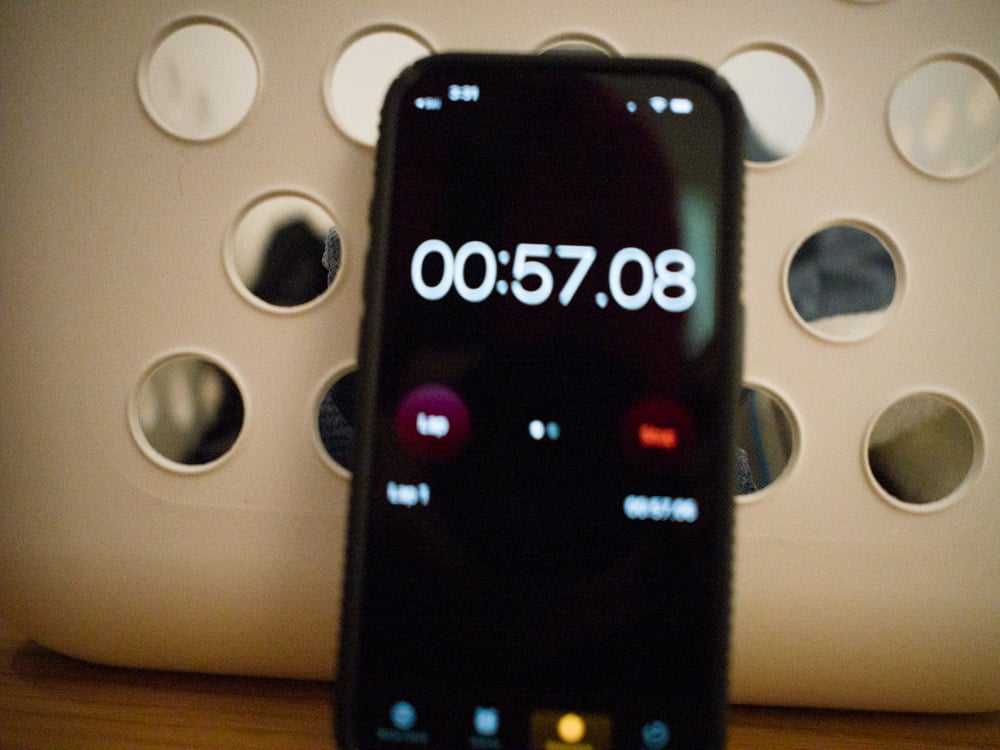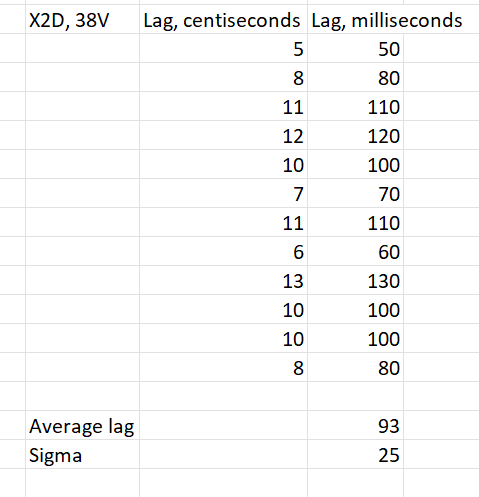In another context, the question of the shutter latency of the Hasselblad X2D in mechanical shutter mode came up. I have a way of accurately measuring shutter latency by triggering a camera and a scope at the same time using a remote release on the camera, and measuring the delay between that triggering and the X-synch contact closure, which occurs when the shutter is all the way open. But I can’t use that on the X2D because it doesn’t have a remote release, and, anyway, my scope and soldering iron aren’t handy.
So I came up with a way to measure the latency including my reaction time.
I set the ISO as high as it would go, the shutter speed to 1/2000, the shutter mode to mechanical, the precision to 14 bits, the recording mode to raw, the focusing to manual, the shutter mode to single shot, and set the focus distance to minimum. Then I started the timer on my phone. When the timer showed the seconds digit change, I tripped the shutter release. I didn’t try to anticipate the change in the seconds digit.
The results for a 12-shot series.
Average lag is 93 milliseconds, including my reaction time. Standard deviation (sigma) is about a quarter of that.
If I’d been looking through the EVF instead of directly at the phone, the delay would have been longer because the finder delay would have been added in.


Leave a Reply